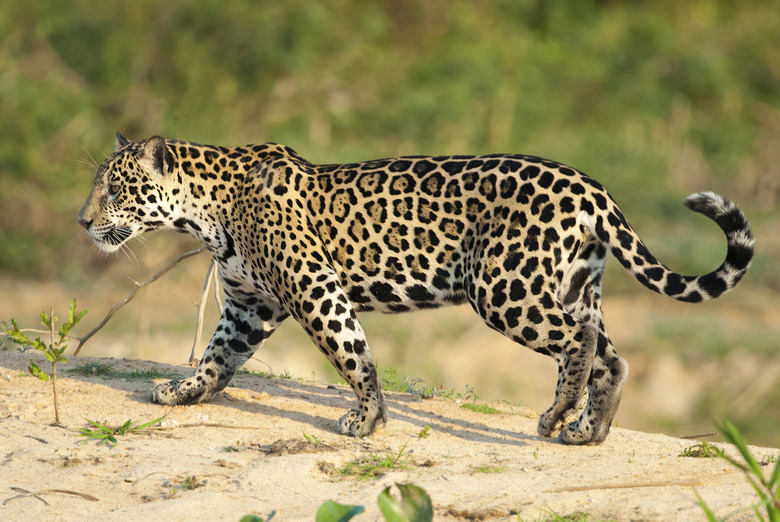Why Are Jaguars Endangered Animals?
Jaguars (Panthera onca) are one of the most well-known endangered species in South America – but for the same reasons that jaguars are regarded as a South American animal, it is easily forgotten that jaguars have historically lived all across southern, central and northern American countries: The jaguar habitat originally spanned all the way from Argentina, through Central America, up into various parts of the southwestern United States, including modern day Arizona and New Mexico. Though the jaguar is formally considered Near Threatened by the IUCN, rather than Endangered, and have been classified as such since 2002, jaguar conservation efforts are still critical today because threats to the species persist.
TL;DR (Too Long; Didn't Read)
Though they are generally considered an animal native to only South America, the jaguar can still be found in North American countries such as the United States. Threats to the jaguar population have varied since the 1800s, but a combination of poaching threats, the deforestation of the Amazon rainforest and similar areas, and conflicts with humans have rendered the jaguar endangered or at risk of being endangered, over the years.
Jaguar Habitat Harm
Jaguar Habitat Harm
Historically, the greatest threat to jaguars have come in the form of habitat erosion and destruction. Because jaguars require lakes and rivers as part of their habitat – and avoid open forest and grasslands when possible – human expansion and settlement around waterways, as well as slash-and-burn deforestation across South America, have reduced the habitat range of jaguars by roughly half its original size. Today, though jaguars can be found elsewhere, the species primarily resides in the Amazon Basin. This habitat damage reduces the number of jaguars the environment can support, particularly when many of the jaguar's prey species are hunted by humans.
Human Conflicts
Human Conflicts
Because human settlement and hunting efforts have reduced the habitat range of jaguars, those remaining have been pressed to adapt to changing conditions. Often, this results in jaguars attempting to kill and eat livestock animals like cows and pigs – putting them in direct conflict with farmers, who have been known to kill jaguars in defense of their livestock and the livelihood they represent. In the United States as well, the sight of a wild jaguar has been known to prompt residents in Arizona and New Mexico to shoot the cats out of fear.
Poaching Threats
Poaching Threats
Unfortunately, human expansion is not the only threat people represent to jaguars: Because the species is so rare in the wild – and because the pattern of their coats are so beloved – jaguars are occasionally hunted illegally by poachers. These poachers kill jaguars for coats and, in recent years, jaguar fangs, which fetch high prices in Asia as components in traditional medicine.
Cite This Article
MLA
Flournoy, Blake. "Why Are Jaguars Endangered Animals?" sciencing.com, https://www.sciencing.com/jaguars-endangered-animals-8187721/. 25 July 2018.
APA
Flournoy, Blake. (2018, July 25). Why Are Jaguars Endangered Animals?. sciencing.com. Retrieved from https://www.sciencing.com/jaguars-endangered-animals-8187721/
Chicago
Flournoy, Blake. Why Are Jaguars Endangered Animals? last modified March 24, 2022. https://www.sciencing.com/jaguars-endangered-animals-8187721/
